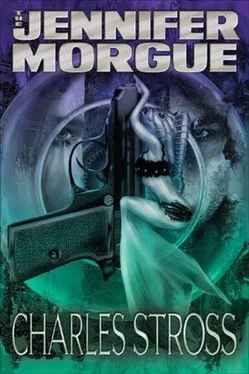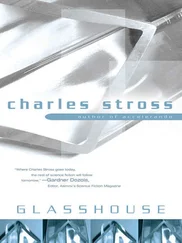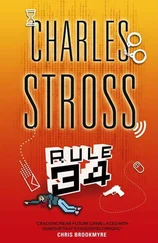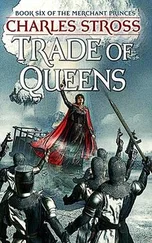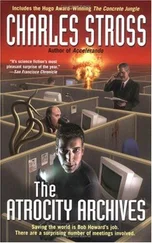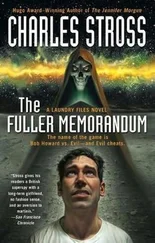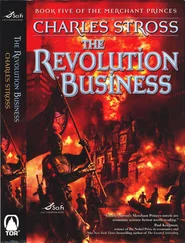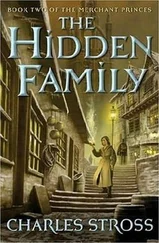"Personnel?" rumbles a voice from Pete's mouth — deeper, more cultured, and infinitely more terrifying. "Ah, I see.
Thank you," The being wearing Pete's flesh steps across the grid — which sparks like a high-tension line and begins to smolder. Emma's wand wavers between me and Pete. I thrust my injured hand into the Bag of Holding and stifle a scream when my fingers stab into the bag of salt within. "It's been too long." His face begins to lengthen, his jaw widening and merging at the edges. He sticks his tongue out: it's grayishbrown and rasplike teeth are sprouting from it. Emma screams in rage and discharges her wand at him. A backwash of negative energy makes my teeth clench and turns my vision gray, but it's not enough to stop the second coming of "Slug" Johnson. He slithers towards her across the floor, and she gears up another spell, but it's too late. I close my eyes and follow the action by the inarticulate shrieks and the wet sucking, gurgling noises. Finally, they die down.
I take a deep breath and open my eves. Below me the room is vacant but for a clean-picked human skeleton and a floor flecked with brown — I peer closer — slugs. Millions of the buggers. "You'd better let him go," I intone.
"Why should I?" asks the assembly of molluscs.
"Because — " I pause. Why should he? It's a surprisingly sensible question. "If you don't, HR — Personnel — will just send another. Their minions are infinite. But you can defeat them by escaping from their grip forever — if you let me lay you to rest."
"Sendme on, then," say the slugs.
"Okayy." And I open my salt-filled fist over the molluscs — which burn and writhe beneath the white powderfall until nothing is left but Pete, curled fetally in the middle of the floor. And it's time to get Pete the hell out of this game and back into his own head before his mother, or some even worse horror, comes looking for him.
AFTERWORD: THE GOLDEN AGE OF SPYING THE MARY-SUE
"MY NAME IS BOND — JAMES BOND."
These six words, heard by hundreds of millions of people, are almost invariably spoken during the first five minutes of each movie in one of the biggest media success stories of the twentieth century. Unless you've lived under a rock for the past forty years, you hear them and you know at once that you're about to be plunged into a two-hour-long adrenaline[1 And testosterone.]-saturated extravaganza of snobbish fashionable excess, violence, sex, car chases, more violence, and Blowing Shit Up — followed by a post-coital cigarette and a lighthearted quip as the credits roll.
It wasn't always so. When Casino Royale was first published in 1953, it got a print run of 4,750 hardcover copies and no advertising budget to speak of; while the initial reviews were favorable, comparing Ian Fleming to Le Queux and Oppenheim (the kings of the prewar British spy-thriller genre), it took a long time for his most famous creation to set the world on fire. Despite his rapidly rising print runs Casino Royale eventually sold over a million paperbacks in the UK alone), and despite his increasing prominence among the postwar thriller writers, a decade elapsed before any of Fleming's novels were filmed; indeed, their author barely lived to see the commercial release of Dr. No and the runaway success of the icon he created. (Nor were the films seen as a runaway success before they wete made — Dr. No was notoriously made on a tight budget, even though it went on to gross nearly $60 million around the world.) Literary immortality — or indeed, mere postmortem survival — is dauntingly hard for a novelist to achieve. The limbo of postmortem obscurity awaits ninety-five percent of all novelists — almost all novels go out of print for good within five years of the death of their author. But in addition to being a million-selling bestseller, Fleming was a ferociously well-connected newspaper executive with a strong sense of the value of his ideas, and he pursued television and film adaptation remorselessly. Cinematic success arrived just in time for his creation, and the synergy between bestselling books and massive movie hype has sufficed to keep them in print ever since.
James Bond is a creature of fantasy, perhaps best described using a literary term looted from that most curious and least respected of fields, fan fiction: the Mary-Sue. A Mary-Sue character is a place-holder in a script, a hollow cardboard cutout into whose outline the author can squeeze their own dreams and fantasies. In the case of Bond, it's cruelly easy to make a case that the famous spy was his author's Mary-Sue, for Fleming had a curious and ambiguous relationship with spying.
A dilettante and dabbler for his first three decades, unsuccessful as a stockbroker, foreign correspondent, and banker, Fleming fortuitously landed his dream job on the eve of the Second World War: Secretary to the Director of Naval Intelligence in the Admiralty. The war was good for Ian Fleming, broadening and deepening him and giving him a job that captured his imagination and drew out his not inconsiderable talents. But Fleming was the man who knew too much: privy to too many secrets, he was wrapped in tissue paper and prevented from pursuing his desire to go into the field. He ended the war with a distinguished record — and absolutely no combat experience (if one excludes being bombed by the Luftwaffe or watching the Dieppe raid from a destroyer safely far off the Normandy coastline).
Fleming grew up in the shade of a father who died heroically on the Western Front in 1917, and in adult life, he wrote in the shadow of an elder brother whose reputation as a novelist surpassed his own. It's easy to imagine these unkind familial comparisons provoking the imaginative but flighty playboy who almost found himself during the war, which goaded him into imagining himself in the shoes of a hero who was not merely larger than life, but larger in every way than his own life.
And, as it turns out, James Bond was larger than Ian Fleming. Not only do few novels survive their author's demise, even fewer acquire sequels written by other hands; yet several other authors (including Kingsley Amis and John Gardner) have toiled in Fleming's vineyard. Few fictional characters acquire biographies written by third parties — but Bond has not only acquired an autobiography (courtesy of biographer John Pearson) but spawned a small cultural industry, including a study of his semiotics by Umberto Eco.
Now, that has got to be a sign of something ...
As with every true pearl, there was a sand-grain of truth at the heart of Bond. Fleming wrote thrillers informed by his actual experience. Years spent working out of the hothouse environment of Room 39 of the Admiralty building — headquarters of the Naval Intelligence Division of the Royal Navy — gave him a ringside seat on the operations of a major espionage organization. On various trips to Washington, DC, he worked with diplomats and officers of the OSS (predecessor organization to the CIA). There is also some evidence that, as a foreign news manager at the Sunday Times after the war, Fleming made his agency's facilities available to officers of MI6. His first Bond novels were submitted to that agency for security clearance before they were published. Bond himself may have been larger than life, but the strictures imposed by the organization he worked for were drawn from reality, albeit the reality of an intelligence agency of the early 1940s.
The world of secret intelligence-gathering during the Second World War was, however, very different from life in the intelligence community today. It was already changing by the late 1950s, as the bleeping, football-shaped Sputniks zipped by overhead and intelligence directors began dreaming of spy satellites. By 2004, when MI5 (the counterintelligence agency) openly placed recruiting advertisements in the press, we can be sure that Bond would have been best advised to seek employment elsewhere. Spies are supposed to be short — less than 180 centimeters (5 feet 11 inches) for men — and nondescript. As a branch of the civil service, MI5's headquarters are presumably nonsmoking, and drinking on the job is frowned upon. As intelligence agencies, MI5 and MI6 staffs aren't in the business of ruthlessly wiping out enemies of the state: any decision to use lethal force lies with the Foreign Secretary, the COBRA committee, and other elements of the British government's security oversight bureaucracy. An MI6 agent driving a 1933 Bentley racer with a supercharged engine, frequenting the high-stakes table at a casino as James Bond so memorably did in his first print appearance, is an almost perfect inversion of the real picture.
Читать дальше
